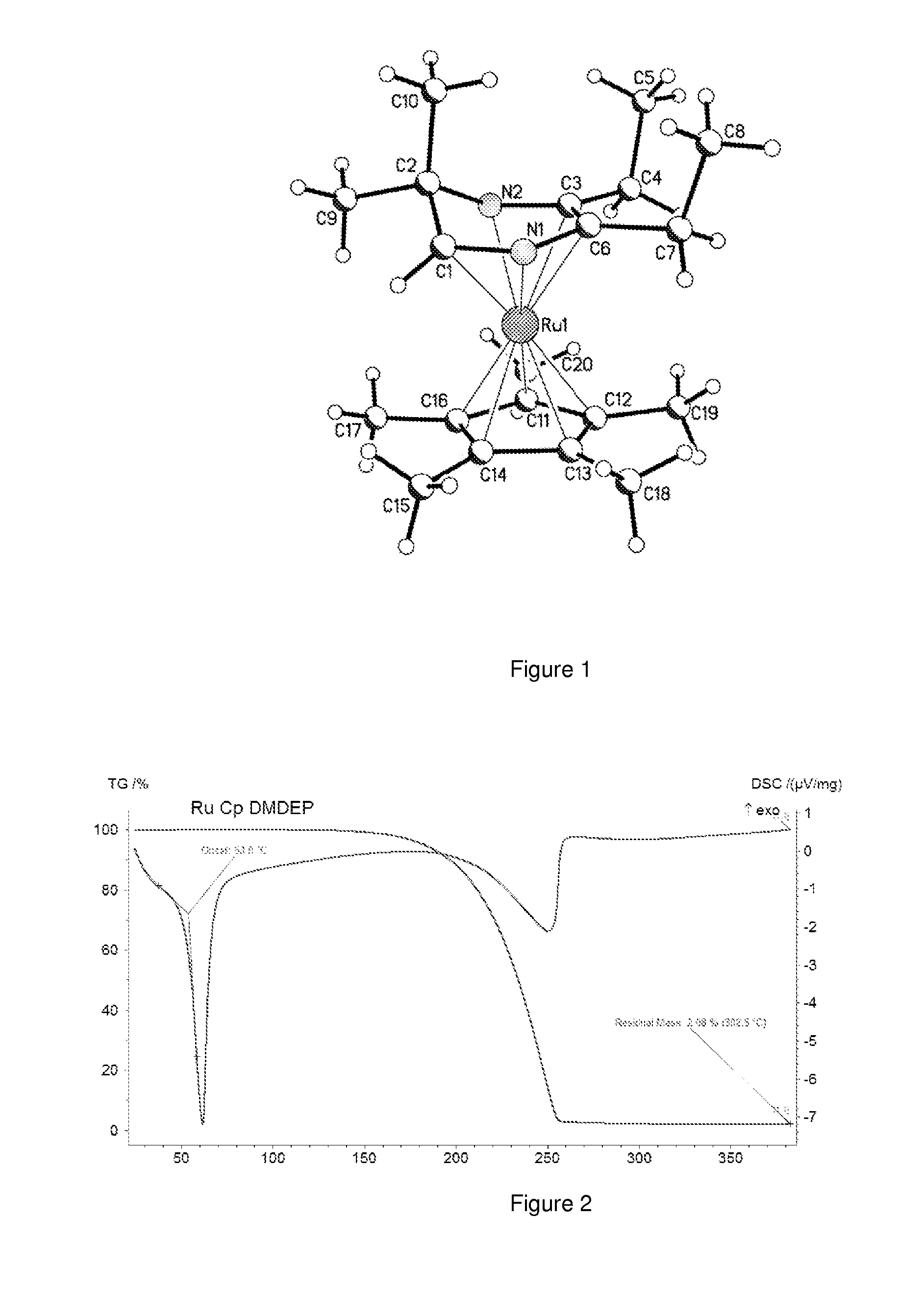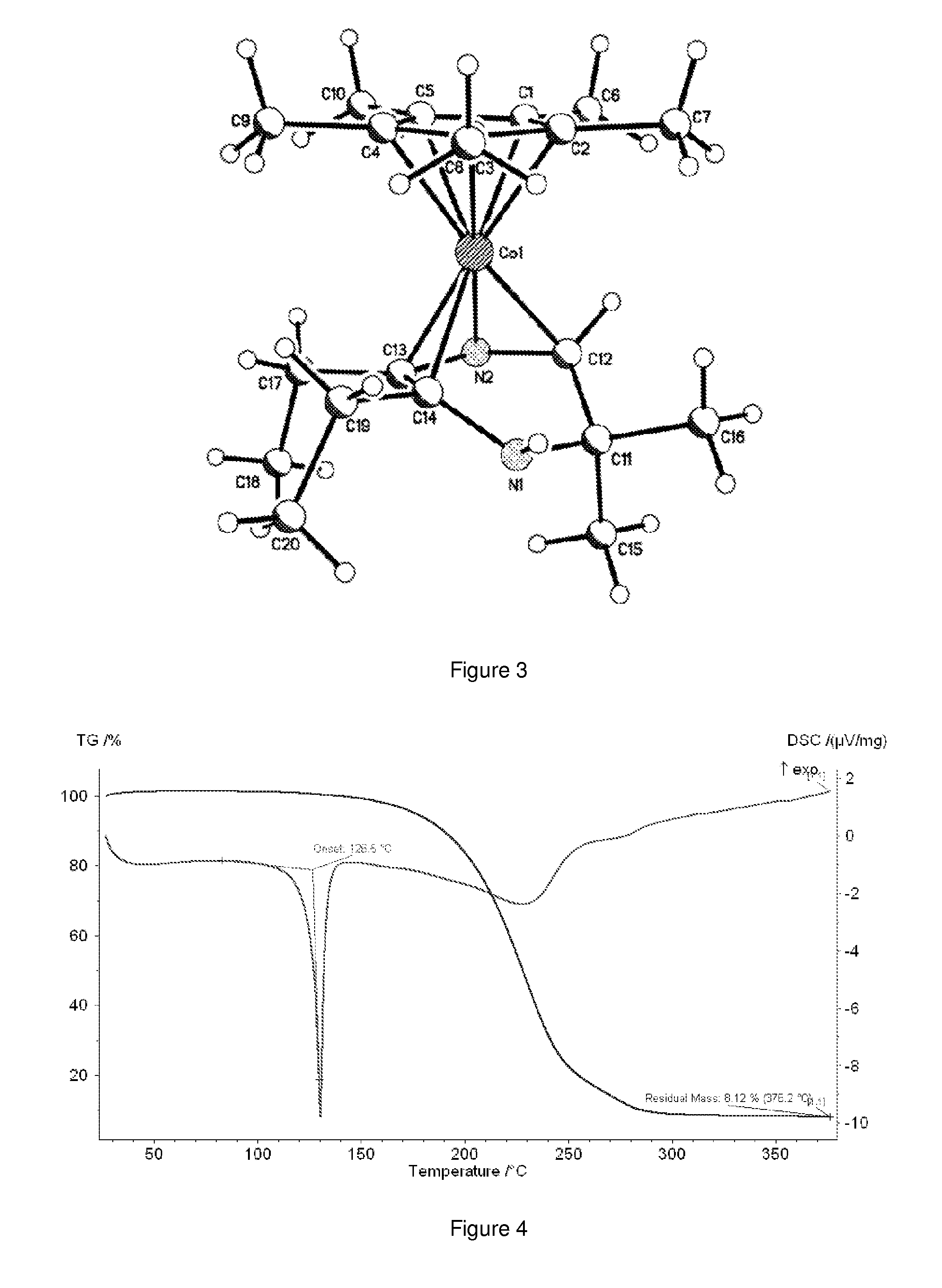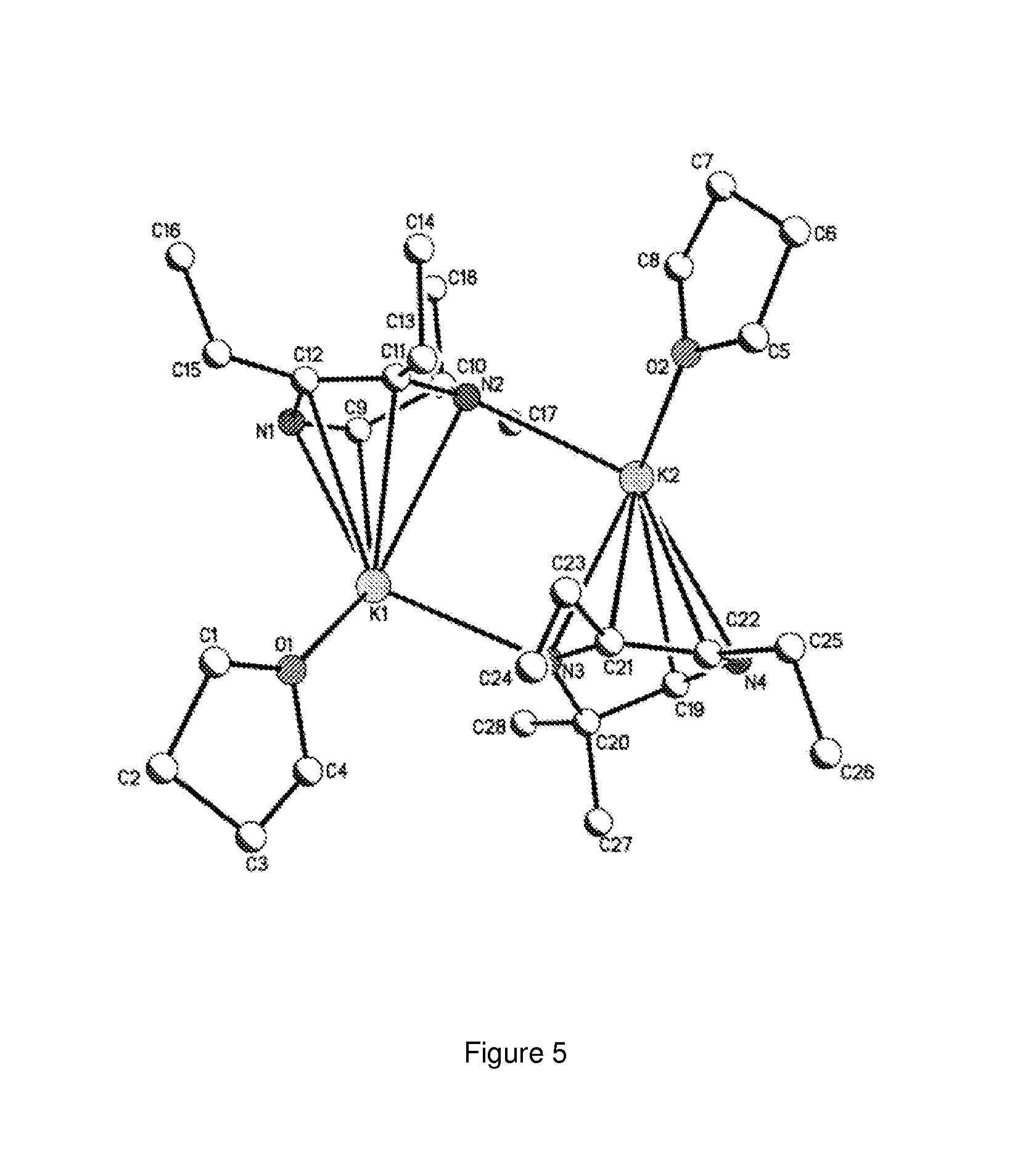Volatile dihydropyrazinly and dihydropyrazine metal complexes
a metal complex and dihydropyrazine technology, applied in the field of dihydropyrazine ligands, can solve the problems of affecting the growth of metal films, the uniformity of deposition of plasma tends to degrade, and the failure of electrical components within the device being manufactured, etc., and achieves the effect of high reactivity for growing metal films
- Summary
- Abstract
- Description
- Claims
- Application Information
AI Technical Summary
Benefits of technology
Problems solved by technology
Method used
Image
Examples
example 1
Synthesis of 2,2-dihydro-3,3-dimethyl-5,6-diethylpyrazine (e.g., HDMDEP)
[0078]50.0 g (0.438 moles) 3,4-hexanedione were dissolved into 250 milliliters (ml) of tetrahydrofuran (THF) and 38.6 g (0.438 moles) of H2NC(Me)2CH2NH2 were added with stirring over 30 minutes maintaining 20-25° C. by ice bath cooling. The mixture was then stirred overnight. The mixture was then stirred with 20 grams(g) of anhydrous magnesium sulfate overnight, filtered and the THF removed by vacuum to yield a golden yellow liquid (58 g). This was then stood over 20 g of dried mole sieves for 2 days. The mole sieves were then removed and the crude material bulb to bulb transferred at 65 C / 100 mTorr, collecting the final product as a very light yellow green liquid. The product yield was 47 g (65%). Gas chromatography-mass spectrometry (GCMS) showed the parent ion at 166 mu.
example 2
Synthesis of ruthenium(pentamethylcyclopentadienyl)(2,2-dihydro-3,3-dimethyl-5,6-diethyl pyrazinyl) (e.g., RuCp*DMDEP)
[0079]Under a vented atmosphere of argon, 9.3 g (0.056 moles) of HDMDEP dissolved in 20 ml of tetrahydrofuran were added dropwise over 10 minutes to 10.66 g (0.053 moles) of potassium hexamethyldisilazane dissolved in 200 ml of tetrahydrofuran cooled to −78 C. The resulting mixture was stirred at −78° C. for 30 minutes then allowed to slowly warm to room temperature over two hours. The resulting solution of KDMDEP was then added via canula over 20 minutes to 14.25 g of chloro(pentamethylcyclopentadienyl)ruthenium (+2) tetramer (e.g., RuCp*Cl) (0.052 moles of ruthenium) stirring in 300 ml of tetrahydrofuran at room temperature. The mixture was then refluxed for 2 days. The solvent was then removed by vacuum and 300 ml of hexane added under argon. The resulting mixture was agitated for 20 minutes then filtered to give a dark brown filtrate. The hexane was removed by va...
example 3
Synthesis cobalt(pentamethylcyclopentadienyl)(2,2-dihydro-3,3-dimethyl-5,6-diethylpyrazine) (e.g., CoCp*HDMDEP)
[0081]Under an atmosphere of nitrogen, 0.68 g (0.005 moles) of pentamethylcyclopentadiene were added to 0.2 g (0.005 moles) of potassium hydride in 20 ml THF and the mixture warmed to 45 C under nitrogen for 2 hrs to yield a buff colored suspension. 0.65 g (0.005 moles) of cobalt dichloride were then added and the mixture stirred overnight at room temperature to yield a dark brown mixture. 1.02 g (0.005 moles) of KDMDEP (THF) solid dissolved in 5 ml THF was added and the mixture stirred overnight. THF was then removed by vacuum and the dark oily mass extracted with 30 ml hexane and filtered. The Hexane was removed by vacuum and the dark brown oil bulb to bulb distilled at 120 C / 100 mTorr to give at first a red brown oil followed by a very dark red crystalline product. Yield=0.4 g (22%), MPt 126.5 C, TGA residue 8.12 wt % as shown in FIG. 4. GCMS showed the parent ion at 360...
PUM
| Property | Measurement | Unit |
|---|---|---|
| Magnetic field | aaaaa | aaaaa |
| Electric charge | aaaaa | aaaaa |
| Current | aaaaa | aaaaa |
Abstract
Description
Claims
Application Information
 Login to View More
Login to View More - R&D
- Intellectual Property
- Life Sciences
- Materials
- Tech Scout
- Unparalleled Data Quality
- Higher Quality Content
- 60% Fewer Hallucinations
Browse by: Latest US Patents, China's latest patents, Technical Efficacy Thesaurus, Application Domain, Technology Topic, Popular Technical Reports.
© 2025 PatSnap. All rights reserved.Legal|Privacy policy|Modern Slavery Act Transparency Statement|Sitemap|About US| Contact US: help@patsnap.com



